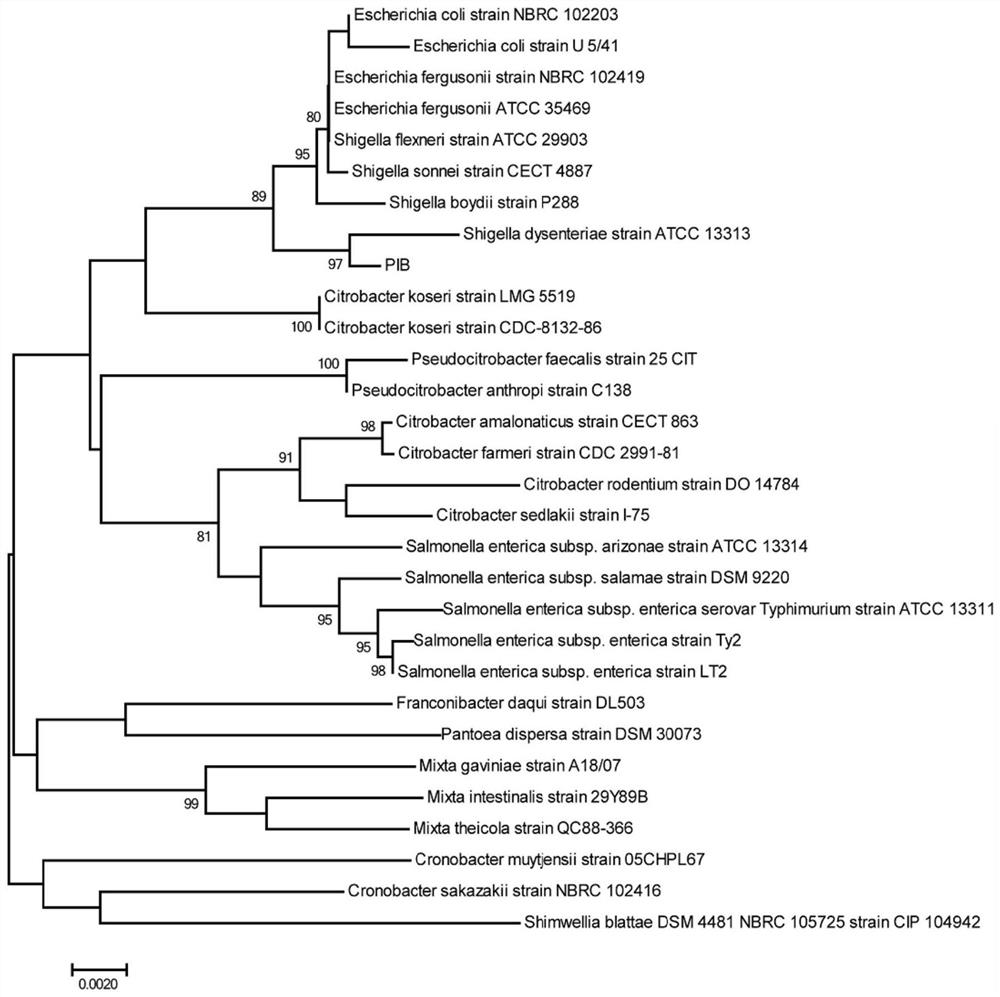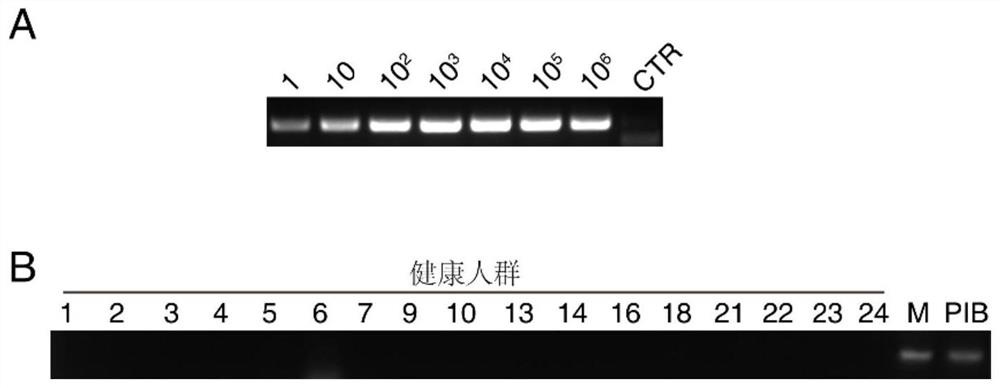Constipation pathogenic bacteria and application thereof
A technology of bacteria and Shigella, applied in the direction of bacteria, biochemical equipment and methods, microorganisms, etc., to achieve broad industrial prospects and rapid diagnosis
- Summary
- Abstract
- Description
- Claims
- Application Information
AI Technical Summary
Problems solved by technology
Method used
Image
Examples
Embodiment 1
[0216] Embodiment 1, experimental method:
[0217] Specimen and stool culture
[0218]Fresh colon segments were collected from ICC patients undergoing subtotal colectomy plus modified Duhamel procedure at Jinling Hospital (China). Wash the specimen with common solution, and spread the bacterial pellet on the blood plate (1% peptone, 0.3% beef extract, 0.5% NaCl, 1.5% agar and 5% sterile defibrinated sheep blood, pH7.3±0.1 ), and then cultured at 37°C for 12-16 hours. Monoclonal bacteria were inoculated into culture tubes containing 3 ml of LB medium (1% peptone, 0.5% yeast extract and 1% NaCl, pH 7.3±0.1). Culture supernatants were collected and screened.
[0219] Intestinal motility assay and bacterial screening
[0220] Colonic tonometry was performed on bacterial culture supernatants from ICC colons. Briefly, colon segments (approximately 5 mm in length) were isolated from 8-10 week-old C57BL / 6 mice and treated with 2+ HEPES-Tyrode (H-T) buffer (140.6mmol / L NaCl, 2.7m...
Embodiment 2
[0239] Example 2, identification of motility-inhibiting bacteria
[0240] Four colonic biopsies were collected from four patients with refractory chronic constipation, and bacterial monoclonal cultures were performed on blood plates. Then, among the obtained colonies, several thousand single clones were transferred to 3 mL of LB medium without antibiotics, respectively, and cultured at 37°C overnight. The effect of bacterial cultures on intestinal motility was examined. Since the peristaltic contraction frequency of the jejunum is faster relative to the colon, the effect of the culture on the peristalsis of the jejunum was first measured and then confirmed for the colon. After a lot of screening, three colonies with obvious inhibitory effects were obtained, and these bacterial colonies maintained the same inhibitory effect even after passing to the sixth generation. These colonies all showed similar morphology, and their inhibitory activity was also similar, especially the s...
Embodiment 3
[0241] Example 3, Genetic Characterization of PIB
[0242] The PIB 16S ribosomal RNA gene (1464bp) was sequenced. Phylogenetic tree analysis showed that PIB16S rrs was closest to Shigella genus with high bootstrap value (97%). Because the evolutionary distance is not close to Shigella dysenteriae strains ( figure 2 ), so PIB is a novel strain of Shigella. The full genome sequence of PIB contained more non-coding RNA and fewer genes than reported Shigella strains (Table 1). Additionally, the genome size differed between these strains. Therefore, PIB was identified as a novel strain of Shigella.
[0243] Table 1. PIB Genome Characteristics
[0244]
[0245]
PUM
 Login to View More
Login to View More Abstract
Description
Claims
Application Information
 Login to View More
Login to View More - R&D
- Intellectual Property
- Life Sciences
- Materials
- Tech Scout
- Unparalleled Data Quality
- Higher Quality Content
- 60% Fewer Hallucinations
Browse by: Latest US Patents, China's latest patents, Technical Efficacy Thesaurus, Application Domain, Technology Topic, Popular Technical Reports.
© 2025 PatSnap. All rights reserved.Legal|Privacy policy|Modern Slavery Act Transparency Statement|Sitemap|About US| Contact US: help@patsnap.com



